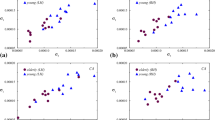Abstract.
Since the first observation of perceptual reversal by Necker, many theoretical approaches have been proposed. In a previous study, we showed that a positive wave appeared approximately 250 ms prior to the button press of the subjects, indicating perceptual reversal during the observation of the Necker cube figure. A basic difficulty in this type of study is the possible jitter in the latency of the button press due to the variability of the subjects' reaction time during a recording session. To overcome this difficulty, a pattern selection method based on the wavelet transform was proposed in the previous study. A dominant positive wavelet coefficient in the delta band was found to represent the perceptual-reversal-related positivity. In the present study, we aim to analyze the changes in the alpha frequency band during perceptual reversal by using the Necker cube. The RMS values of the alpha frequency band were measured for two time periods: ±3 SD around the mean peak latency of the perceptual-reversal-related positivity and a time window of the same length before the positive wave. We found significantly increased delta power and decreased alpha power during the perceptual-reversal-related positivity.
Similar content being viewed by others
Author information
Authors and Affiliations
Additional information
Received: 29 March 1999 / Accepted in revised form: 15 October 1999
Rights and permissions
About this article
Cite this article
Isoglu-Alkaç, Ü., Basar-Eroglu, C., Ademoglu, A. et al. Alpha activity decreases during the perception of Necker cube reversals: an application of wavelet transform. Biol Cybern 82, 313–320 (2000). https://doi.org/10.1007/s004220050585
Issue Date:
DOI: https://doi.org/10.1007/s004220050585




